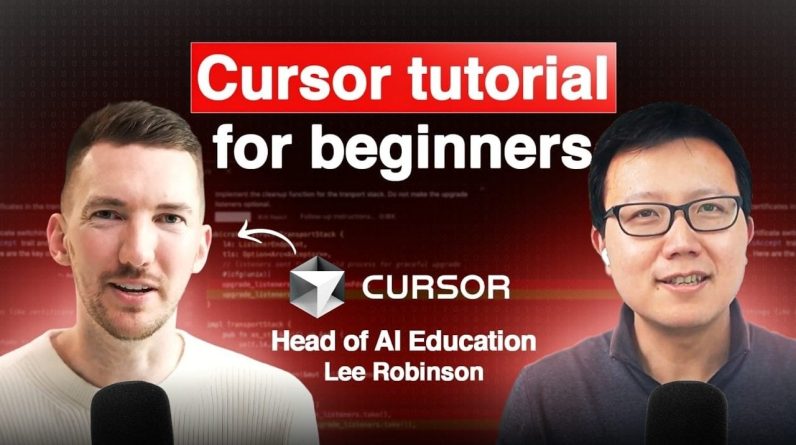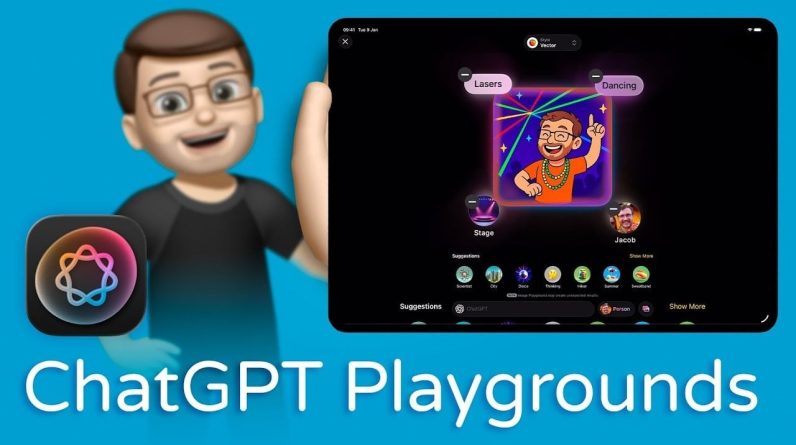
What if you could spend less time debugging and formatting code and more time solving the problems that truly excite you? With the rise of AI in software development, this vision is no longer a distant dream but an achievable reality. AI tools like Cursor are transforming the way engineers work, automating repetitive tasks and offering intelligent suggestions that amplify productivity. Yet, here’s the catch: these tools aren’t magic wands, they’re powerful collaborators that require your guidance and expertise to shine. As Cursor’s Head of AI Education, Lee Robinson, puts it, embracing AI isn’t just about efficiency; it’s about unlocking a new level of creativity and innovation in your workflow.
In this beginner-friendly breakdown, you’ll discover how to harness Cursor and similar AI tools to streamline your development process, whether you’re debugging, generating code, or managing dependencies. But this isn’t just a technical guide, it’s a roadmap to understanding how AI fits into the broader landscape of software engineering. From learning how to validate AI-generated outputs to exploring strategies for building scalable applications, you’ll gain actionable insights that bridge the gap between automation and human expertise. By the end, you’ll see how AI can empower you to focus on what truly matters: building impactful, innovative solutions. After all, the future of software development isn’t about replacing engineers, it’s about enhancing what they can achieve.
AI in Software Development
TL;DR Key Takeaways :
- AI is a complementary tool in software development, automating repetitive tasks and enhancing productivity, but it requires human oversight for context, validation, and strategic decision-making.
- Incorporating AI effectively involves selecting the right tools, defining clear project requirements, and implementing rigorous testing protocols to ensure quality and alignment with goals.
- Beginners should start small, combining hands-on experimentation with foundational knowledge in computer science, while product managers benefit from understanding technical concepts to collaborate effectively with engineers.
- Experienced engineers can optimize workflows by using AI for routine tasks like dependency management, debugging, and documentation, while maintaining control over critical decisions to ensure quality and innovation.
- The future of AI in software development emphasizes collaboration between engineers and AI, requiring adaptability and a growth mindset to use AI’s evolving capabilities for scalable and maintainable solutions.
AI can suggest code snippets, propose solutions, or even automate routine tasks like dependency management and code reformatting. Yet, the responsibility of reviewing and integrating these outputs into your projects remains with you. The true value of AI lies in its ability to handle mundane tasks, freeing you to focus on solving complex problems and making strategic decisions. For instance, summarizing large datasets or automating testing processes are areas where AI excels, but these capabilities require your oversight to ensure quality and alignment with project goals. By combining AI’s efficiency with your expertise, you can create robust, scalable, and innovative software solutions.
Strategies for Building Applications with AI
Incorporating AI into your development process requires a structured and thoughtful approach. This begins with selecting the right technical stack, defining clear project requirements, and establishing rigorous testing protocols. AI tools can assist by generating code iteratively, setting up infrastructure, and creating implementation plans. However, their success depends on your ability to guide, refine, and validate their outputs.
Testing and self-correction are critical components of AI-assisted development. By integrating tools like linters and automated tests into your workflow, you enable AI to verify its outputs and improve its performance. For example, linters can detect syntax errors, while automated tests validate functionality and ensure that AI-generated code meets your quality standards. These practices not only enhance the reliability of your software but also ensure alignment with your project’s objectives. By combining AI’s capabilities with robust testing and validation, you can build applications that are both efficient and dependable.
Guidance for Beginners and Product Managers
If you are new to AI-driven development, starting small is the key to success. Begin with simple projects to familiarize yourself with AI tools and their capabilities. Experimentation is essential to understanding how AI generates outputs and how you can refine its suggestions. Pair this hands-on approach with a solid foundation in computer science fundamentals, such as data structures, algorithms, and system design. This combination will help you build confidence and competence in using AI effectively.
For product managers, a basic understanding of technical concepts like APIs, client-server architecture, and security practices is crucial. This knowledge enables you to collaborate effectively with engineers and use AI tools to enhance product development. By bridging the gap between technical and non-technical roles, you can ensure that AI contributes meaningfully to your projects. Additionally, understanding AI’s capabilities allows you to set realistic expectations and align its use with your team’s goals.
Cursor AI Coding Beginners Guide 2025
Unlock more potential in AI coding by reading previous articles we have written.
Optimizing Workflows with AI for Experienced Engineers
Experienced engineers can use AI to optimize workflows and handle routine tasks more efficiently. For example, AI can manage dependencies, reformat code, generate documentation, or even assist in debugging. These tasks, while necessary, often consume valuable time that could be better spent on strategic decision-making or solving complex engineering challenges.
To maximize AI’s potential, integrate it into your existing engineering practices. Use AI as a supporting tool to enhance your expertise rather than replace it. While AI can suggest solutions or automate processes, you remain responsible for evaluating their feasibility and making sure they align with project requirements. By maintaining control over critical decisions, you can harness AI’s capabilities without compromising quality or reliability. This approach allows you to focus on high-impact tasks, driving innovation and delivering value to users.
Cursor’s Philosophy on Product Development
Cursor emphasizes empowering engineers to take ownership of the entire product development process. As a product-minded generalist, you are encouraged to blend technical and product responsibilities, making sure that AI tools enhance your efficiency and scalability. This approach fosters a collaborative environment where AI complements your skills rather than replacing them.
Cursor’s AI tools are designed to integrate seamlessly into workflows, allowing you to focus on high-impact tasks. For instance, these tools can assist with infrastructure setup, iterative code generation, and testing, allowing you to deliver scalable and maintainable software solutions. By combining AI’s capabilities with your domain expertise, you can drive innovation and create products that meet user needs effectively.
The Future of AI in Software Development
AI is making software development more accessible to a broader audience, including non-engineers such as product managers and designers. However, as these tools evolve, they must balance beginner-friendly features with robust capabilities for professionals. This dual focus ensures that AI supports a diverse range of users while maintaining high standards of performance and reliability.
The role of engineers is also undergoing a transformation. Rather than solely writing code, you are now tasked with guiding and collaborating with AI agents. This shift demands adaptability and a willingness to embrace new tools and methodologies. By using AI to build scalable, maintainable software, you can stay ahead in an increasingly competitive industry. The ability to integrate AI into your workflows and adapt to its evolving capabilities will be a defining skill for engineers in the years to come.
Insights from Lee Robinson
Lee Robinson, Cursor’s Head of AI Education, highlights the importance of combining technical expertise with curiosity and adaptability. His transition from Vercel to Cursor was driven by a deep interest in AI’s potential to transform software development. Robinson emphasizes that embracing AI is not just about efficiency, it is also an opportunity for learning and innovation.
For developers, Robinson advises adopting a growth mindset and exploring AI tools as a way to expand your skill set. By experimenting with these tools and integrating them into your workflows, you can unlock new possibilities and drive meaningful change in your projects. His insights underscore the importance of staying curious and open to new technologies, making sure that you remain at the forefront of the rapidly evolving field of software development.
Media Credit: Peter Yang
Filed Under: AI, Guides
Latest Geeky Gadgets Deals
If you buy something through one of these links, Geeky Gadgets may earn an affiliate commission. Learn about our Disclosure Policy.
Originally Appeared Here






